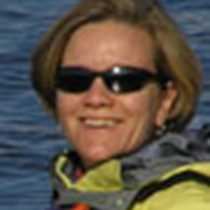Baranof Island & Chatham Strait
We spent much of today exploring one of the rarest ecosystems in the world, the temperate rainforest. Historically, temperate rainforests covered a mere 0.02% of the Earth’s land mass. They were found on every continent but Africa and Antarctica, situated at mid-latitudes in the moist coastal regions. Today, just half of this rare and rich ecosystem remains, and most of this is along the coast of North America, in Southeast Alaska and British Columbia, Canada. With abundant precipitation, cool summers and mild winters, the giant conifers that typify this biome grow slowly, for hundreds of years, to 300 feet in height and more than 20 feet in diameter. Thick layers of moss and lichens carpet the forest floor and the limbs of ancient trees, holding moisture and decomposing to provide essential nutrients to larger plants. Animals from tiny winter wrens and slimy banana slugs to bald eagles and brown bears are part of the complex web of life that has existed here, almost unchanged, for millennia.
Shortly after breakfast, on our first full day aboard the Sea Lion, we boarded Zodiacs to go ashore and walk, in this wet and wild rainforest. With muck boots and rain gear, we were well prepared for the trail. Hiking through the forest to a tidal lagoon we saw our first bear tracks. Beyond, we found gorgeous wildflowers and a soggy bald eagle hunkered down against the persistent mist. Continuing, we walked along a salmon spawning stream, through old-growth forest to a lovely cascade and resting pool, stopping to photograph queen’s cup lilies and the enormous green leaves of skunk cabbage. The long hikers continued even farther, to the grassy shores of Lake Eva and a quiet grove of ancient trees beyond. One particularly silent group heard the howl of an Alexander Archipelago gray wolf, drifting across the lake and through the forest.
Muddy and smiling, we loaded the Zodiacs and sped back to the ship, where warm showers and hot lunch were waiting. Although we’d planned to go kayaking this afternoon, the wind and seas had other ideas. A strong southwesterly breeze sent us out in search of marine mammals instead, and we were not disappointed. Keen eyes spotted a small group of killer whales that we guessed to be transients. Although distant at first, they eventually came closer and the die-hards who stayed on the bow despite the inclement weather had several very close looks. With an intermission for these killer whales, Sharon Grainger shared her beautiful slides and stories of the succession of plants that have recolonized this landscape after the glaciers retreated.
Entering the calm of Kelp Bay after dinner this evening, we stepped on deck to hear the rare sound of marbled murrelets calling, breathed in the moist forest air and quietly drifted back to our cabins, for sleep.
We spent much of today exploring one of the rarest ecosystems in the world, the temperate rainforest. Historically, temperate rainforests covered a mere 0.02% of the Earth’s land mass. They were found on every continent but Africa and Antarctica, situated at mid-latitudes in the moist coastal regions. Today, just half of this rare and rich ecosystem remains, and most of this is along the coast of North America, in Southeast Alaska and British Columbia, Canada. With abundant precipitation, cool summers and mild winters, the giant conifers that typify this biome grow slowly, for hundreds of years, to 300 feet in height and more than 20 feet in diameter. Thick layers of moss and lichens carpet the forest floor and the limbs of ancient trees, holding moisture and decomposing to provide essential nutrients to larger plants. Animals from tiny winter wrens and slimy banana slugs to bald eagles and brown bears are part of the complex web of life that has existed here, almost unchanged, for millennia.
Shortly after breakfast, on our first full day aboard the Sea Lion, we boarded Zodiacs to go ashore and walk, in this wet and wild rainforest. With muck boots and rain gear, we were well prepared for the trail. Hiking through the forest to a tidal lagoon we saw our first bear tracks. Beyond, we found gorgeous wildflowers and a soggy bald eagle hunkered down against the persistent mist. Continuing, we walked along a salmon spawning stream, through old-growth forest to a lovely cascade and resting pool, stopping to photograph queen’s cup lilies and the enormous green leaves of skunk cabbage. The long hikers continued even farther, to the grassy shores of Lake Eva and a quiet grove of ancient trees beyond. One particularly silent group heard the howl of an Alexander Archipelago gray wolf, drifting across the lake and through the forest.
Muddy and smiling, we loaded the Zodiacs and sped back to the ship, where warm showers and hot lunch were waiting. Although we’d planned to go kayaking this afternoon, the wind and seas had other ideas. A strong southwesterly breeze sent us out in search of marine mammals instead, and we were not disappointed. Keen eyes spotted a small group of killer whales that we guessed to be transients. Although distant at first, they eventually came closer and the die-hards who stayed on the bow despite the inclement weather had several very close looks. With an intermission for these killer whales, Sharon Grainger shared her beautiful slides and stories of the succession of plants that have recolonized this landscape after the glaciers retreated.
Entering the calm of Kelp Bay after dinner this evening, we stepped on deck to hear the rare sound of marbled murrelets calling, breathed in the moist forest air and quietly drifted back to our cabins, for sleep.



